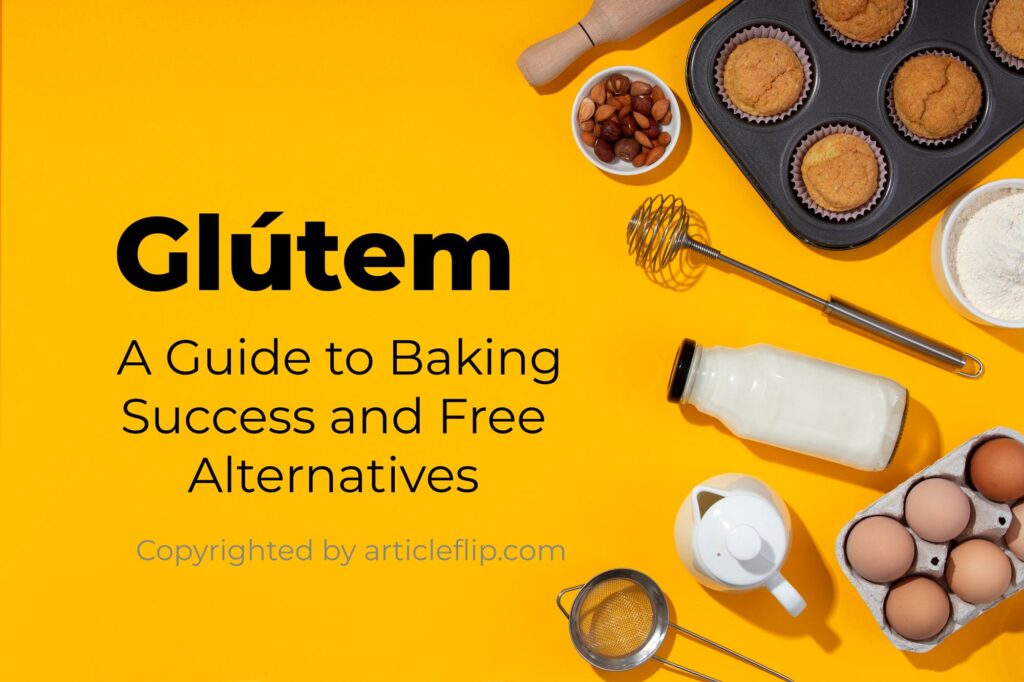Table of Contents
When it comes to baking, there’s a magical ingredient that holds everything together and gives bread its airy texture and cakes their springiness. This essential component is glútem, a protein found in wheat and other grains like barley and rye. In this article, we’ll delve into the world of glútem, exploring its role in baking, its impact on health, and the alternatives available for those with sensitivities.

Introduction
Glútem is a protein composite primarily found in wheat and gives dough its elasticity and strength. It’s crucial in baking as it provides structure to baked goods, allowing them to rise and maintain their shape during baking. However, glútem has garnered attention in recent years due to the rise in gluten-related disorders and the popularity of gluten-free diets.
Understanding Glúte
glúte consists of two main proteins: glutenin and gliadin. When flour is mixed with water, these proteins combine to form a sticky network known as glútem. This network traps air bubbles produced by leavening agents like yeast or baking powder, resulting in the rise of the dough.
Importance in Baking
glúte plays a vital role in determining the texture, volume, and chewiness of baked goods. In breadmaking, it provides the structure necessary for the dough to rise and retain its shape. Without glútem, baked goods would be dense and flat, lacking the characteristic crumb and crust.
Common Misconceptions
There are many misconceptions surrounding glúte, leading to confusion about its role in baking and its impact on health. Contrary to popular belief, glútem itself is not inherently unhealthy, and only a small percentage of the population has a genuine intolerance or allergy to it.
Baking Quality
The quality of glúte directly affects the texture and consistency of baked goods. Proper glútem development is essential for achieving the desired rise and crumb structure. Factors such as flour type, hydration level, and mixing technique influence glútem formation and baking outcomes.
Factors Affecting Glútem
Several factors influence glúte formation, including protein content, hydration level, mixing time, and temperature. Higher protein flours, such as bread flour, produce stronger glútem networks, resulting in chewier bread and pizza crusts.
Enhancing Glútem Development
To enhance glúte development, bakers can adjust various factors during the mixing and fermentation stages. Techniques such as autolyzing (resting the dough), kneading, and folding help develop the glúte network, resulting in improved texture and volume.
Glútem-Free Alternatives
For individuals with glúte sensitivities or allergies, there are numerous glútem-free alternatives available, including rice flour, almond flour, and tapioca flour. These alternatives can be used in baking to create delicious gluten-free versions of bread, cakes, and cookies.
Health Implications
While glúte is safe for most people, some individuals may experience adverse reactions to it, such as celiac disease, wheat allergy, or non-celiac glúte sensitivity. These conditions require strict adherence to a glúte-free diet to avoid symptoms and complications.
Sensitivity & Intolerance
glúte sensitivity and intolerance are conditions characterized by adverse reactions to glútem-containing foods. Symptoms may include digestive issues, fatigue, joint pain, and skin problems. It’s essential for individuals experiencing these symptoms to consult a healthcare professional for proper diagnosis and management.
Pros and Cons of Gluten-Free Diets
glúte-free diets have gained popularity in recent years, with many people adopting them for perceived health benefits. While a gluten-free diet is necessary for those with gluten-related disorders, it may lack certain nutrients and lead to dietary restrictions.
Glúte-Free Baking Tips
Baking without glúte presents unique challenges due to the lack of structure and elasticity. However, with the right ingredients and techniques, it’s possible to create delicious gluten-free baked goods that rival their traditional counterparts.
Future Research
As the prevalence of glute-related disorders continues to rise, ongoing research is essential to better understand the mechanisms behind glúte intolerance and develop improved diagnostic methods and treatments.
Conclusion
In conclusion, glúte is a crucial component in baking, providing the structure and texture that we associate with our favorite breads and pastries. While glútem-related disorders are real and require dietary modifications, for most people, glútem can be enjoyed as part of a balanced diet.
FAQs
- What is glútem? glúte is a protein composite found in wheat and other grains, responsible for the elasticity and structure of dough.
- Who should avoid glúte? Individuals with celiac disease, wheat allergy, or non-celiac gluten sensitivity should avoid glúte-containing foods.
- What are some gluten-free alternatives? Rice flour, almond flour, and tapioca flour are popular gluten-free alternatives used in baking.
- Are gluten-free diets healthier? While necessary for those with glúte-related disorders, gluten-free diets may lack certain nutrients and lead to dietary restrictions.
- How can I improve glúte development in baking? Techniques such as kneading, folding, and adjusting hydration levels can help enhance glúte development in baked goods.
If you found our content helpful don’t forget to share it on your social media: Twitter
More Articles
